 W
WBerlin, then the capital of Nazi Germany, was subject to 363 air raids during the Second World War. It was bombed by the RAF Bomber Command between 1940 and 1945, by the USAAF Eighth Air Force between 1943 and 1945, and the French Air Force between 1944 and 1945, as part of the Allied campaign of strategic bombing of Germany. It was also attacked by aircraft of the Red Air Force, in 1941 and particularly in 1945 as Soviet forces closed on the city. British bombers dropped 45,517 tons of bombs, while American aircraft dropped 23,000 tons. As the bombings continued, more and more people fled the city. By May 1945, 1.7 million people had fled.
 W
WThe Battle of Berlin was a series of attacks on Berlin by RAF Bomber Command along with raids on other German cities to keep German defences dispersed. Air Chief Marshal Sir Arthur Harris, AOC-in-C Bomber Command, believed that "We can wreck Berlin from end to end if the USAAF come in with us. It will cost us between 400 and 500 aircraft. It will cost Germany the war".
 W
WThe German town of Baden-Baden in the Black Forest was the target of various Allied air raids in 1944 and 1945 and suffered some bomb damage. The historic town centre, the casino and the spa area, however, remained undamaged. Baden-Baden which had 33,166 inhabitants in May 1939 was regarded as a minor target. There were a goods station and various barracks several kilometres away from the town centre.
 W
WBombing of Frankfurt am Main by the Allies of World War II killed about 5,500 residents and destroyed the largest medieval city centre in Germany.
 W
WDuring World War II, Braunschweig was attacked by Allied aircraft in 42 bombing raids. On the night of 14/15 October 1944, the attack by No. 5 Group Royal Air Force (RAF) marked the high point of the destruction of Henry the Lion's city during the war. The air raid was part of Operation Hurricane, which was designed to demonstrate the capabilities of the Allied bombing campaign. The attack caused a massive conflagration, that might have developed into a firestorm, and resulted in Braunschweig burning continuously for two and a half days from 15 to 17 October. More than 90 percent of the medieval city centre was destroyed, changing the city's appearance to the present day.
 W
WThe Bombing of Bremen in World War II by the British Royal Air Force and US Eighth Air Force targeted strategic targets in the state Free Hanseatic City of Bremen, which had heavy anti-aircraft artillery but only 35 fighter aircraft in the area. In addition to Wesermünde/Bremerhaven, targets were also in Farge and Vegesack. Bremen also included concentration camps such as Bremen-Farge and Bremen-Vegesack. The city of Bremen was captured in April 1945.
 W
WThe German city of Cologne was bombed in 262 separate air raids by the Allies during World War II, all by the Royal Air Force (RAF) but for a single failed post-capture test of a guided missile by the United States Army Air Forces. A total of 34,711 long tons of bombs were dropped on the city by the RAF. 20,000 people died during the war in Cologne due to aerial bombardments.
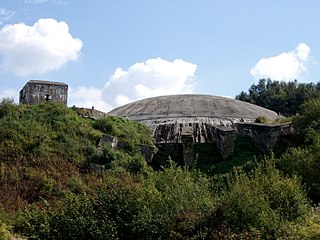 W
WCrossbow was the code name in World War II for Anglo-American operations against the German long range reprisal weapons (V-weapons) programme. The main V-weapons were the V-1 flying bomb and V-2 rocket – these were launched against Britain from 1944 to 1945 and used against continental European targets as well.
 W
WDarmstadt was bombed a number of times during World War II. The most devastating air raid on Darmstadt occurred on the night of 11/12 September 1944 when No. 5 Group of the Royal Air Force (RAF) bombed the city. 66,000 of the 110,000 inhabitants of Darmstadt at the time became homeless. Darmstadt lost between 12,500 and 13,500 inhabitants during World War II. The calligraphic memorial Darmstädter Brandnamen lists about 4,000 names. Darmstadt had several major industrial targets including Merck and Rohm and Haas chemical works as well as military communications networks.
 W
WThe bombing of Dresden was a British-American aerial bombing attack on the city of Dresden, the capital of the German state of Saxony, during World War II. In four raids between 13 and 15 February 1945, 722 heavy bombers of the British Royal Air Force (RAF) and 527 of the United States Army Air Forces (USAAF) dropped more than 3,900 tons of high-explosive bombs and incendiary devices on the city. The bombing and the resulting firestorm destroyed more than 1,600 acres (6.5 km2) of the city centre. An estimated 22,700 to 25,000 people were killed. Three more USAAF air raids followed, two occurring on 2 March aimed at the city's railway marshalling yard and one smaller raid on 17 April aimed at industrial areas.
 W
WDuisburg was bombed a number of times by the Allies during World War II. The most devastating air raids on Duisburg occurred during October 1944 when the city was bombed by the Royal Air Force (RAF).
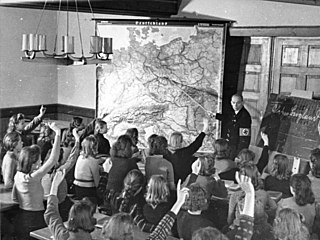 W
WThe evacuation of children in Germany during the World War II was designed to save children in Nazi Germany from the risks associated with the aerial bombing of cities, by moving them to areas thought to be less at risk. The German term used for this was Kinderlandverschickung, a short form of Verschickung der Kinder auf das Land.
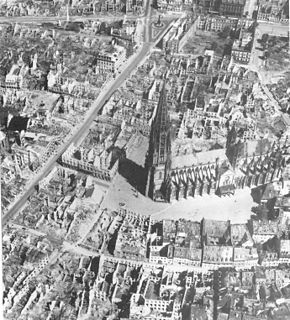 W
WOperation Tigerfish was the military code name in World War II for the air raid on Freiburg in the evening of 27 November 1944 by the Royal Air Force with about 2,800 dead.
 W
WGerman Village was the nickname for a range of mock houses constructed in 1943 by the U.S. Army in the Dugway Proving Ground in Utah, roughly 85 miles (137 km) southwest of Salt Lake City, in order to conduct experiments used for the bombing of Nazi Germany.
 W
WThe Allied bombing of Hamburg during World War II included numerous attacks on civilians and civic infrastructure. As a large city and industrial centre, Hamburg's shipyards, U-boat pens, and the Hamburg-Harburg area oil refineries were attacked throughout the war.
 W
WThe Bombing of Hannover was a series of eighty-eight air raids by RAF Bomber Command and the United States Army Air Forces on the German city of Hanover during World War II. 4,748 residents and 2,034 others were killed. Around 1,000 aerial mines, 34,000 high explosive bombs, 900,000 incendiary bombs and 50,000 fire bombs were dropped. The heaviest raid was that by the RAF on the night of 8/9 October 1943, killing 1,245 people. This was an example of the carpet bombing of suburban and residential civilian targets laid out in the 14 February 1942 Area Bombing Directive.
 W
WDuring World War II, the German city of Heilbronn was bombed numerous times by the British Royal Air Force and the United States Army Air Forces. The largest air-raid occurred on December 4, 1944, but Heilbronn was targeted several times before and after until the end of World War II. Altogether, an estimated 7,000 inhabitants of the city lost their lives during bombings.
 W
WThe German city of Hildesheim, c. 30 kilometres south of Hanover, was the target of eight Allied air raids in 1944 and 1945 and suffered considerable bomb damage.
 W
WOperation Hurricane was a 24-hour terror bombing operation to "demonstrate to the enemy in Germany generally the overwhelming superiority of the Allied Air Forces in this theatre" and "cause mass panic and disorginazation [sic] in the Ruhr, disrupt frontline communications and demonstrate the futility of resistance".
 W
WOperation Hydra was an attack by RAF Bomber Command on a German scientific research centre at Peenemünde on the night of 17/18 August 1943. Group Captain John Searby, CO of 83 Squadron, commanded the operation, the first time that Bomber Command used a master bomber to direct the attack of the main force. Hydra began Operation Crossbow, a campaign against the German V-weapon programme. The British lost 215 aircrew, 40 bombers and killed several hundred enslaved workers in the nearby Trassenheide labour camp. The Luftwaffe lost twelve night-fighters and about 170 German civilians were killed, including two V-2 rocket scientists. Prototype V-2 rocket launches were delayed for about two months, testing and production was dispersed and the morale of the German survivors was severely affected.
 W
WThe Kammhuber Line was the Allied name given to the German night air defense system established in July 1940 by Colonel Josef Kammhuber. It consisted of a series of control sectors equipped with radars and searchlights and an associated night fighter. Each sector would direct the night fighter into visual range with target bombers.
 W
WThe Kassel World War II bombings were a set of Allied strategic bombing attacks which took place from February 1942 to March 1945. In a single deadliest raid on 22–23 October 1943, 150,000 inhabitants were bombed-out, at least 10,000 people died, the vast majority of the city center was destroyed, and the fire of the most severe air raid burned for seven days. The US First Army captured Kassel on 3 April 1945, where only 50,000 inhabitants remained, versus 236,000 in 1939.
 W
WDuring World War II, Leipzig was repeatedly attacked by British as well as American air raids. The most severe attack was launched by the Royal Air Force in the early hours of 4 December 1943 and claimed more than 1,800 lives. Large parts of the city center were destroyed, while factories experienced temporary shortfalls in production, had to move production facilities or even were decentralized.
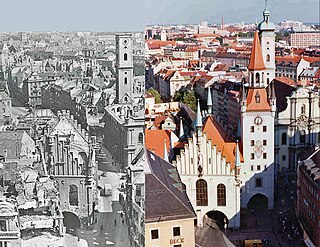 W
WThe bombing of Munich took place mainly in the later stages of World War II. Munich was, and is, a significant German city, as much culturally as well as industrially. Augsburg, thirty-seven miles to the west, was a main centre of diesel engine production, and was also heavily bombed during the war. Although some considerable distance from the United Kingdom, Munich is not a difficult city to find from the air, mainly due to its size, and possibly its proximity to the Austrian Alps to the south-east as a visual reference point. Munich was protected (initially) by its distance from the United Kingdom.
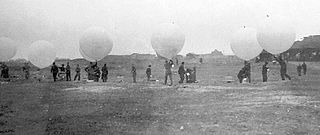 W
WOperation Outward was a British plan during the Second World War to attack Germany by means of free-flying balloons. It made use of cheap, simple balloons filled with hydrogen. The balloons carried either a trailing steel wire to damage high voltage power lines by producing a short circuit or incendiary devices to start fires in fields, forests and heathland. A total of 99,142 Outward balloons were launched; about half carried incendiaries and half carried trailing wires.
 W
WThe second Schweinfurt raid, also called Black Thursday, was a World War II air battle that took place on 14 October 1943, over Nazi Germany between forces of the United States 8th Air Force and German Luftwaffe fighter arm (Jagdwaffe). The American bombers conducted a strategic bombing raid on ball bearing factories to reduce production of these vital parts for all manner of war machines. This was the second attack on the factories at Schweinfurt. American wartime intelligence claimed the first Schweinfurt–Regensburg mission in August had reduced bearing production by 34 percent but had cost many bombers. A planned follow-up raid had to be postponed to rebuild American forces.
 W
WThe Bombing of Würzburg in World War II was a large-scale air attack on the city of Würzburg, and was part of the strategic bombing campaign by the Allies against Nazi Germany. Although lacking major armaments industries and hosting around 40 hospitals at the time, Würzburg was targeted as a traffic hub and as part of the attempt by Bomber Command to break the spirit of the German people. The major raid occurred on March 16, 1945, when Royal Air Force bombers dropped incendiary bombs that set fire to much of the city, killing an estimated 5,000 people and almost completely obliterating the historic town. Almost 90% of the buildings were destroyed by a raid that lasted less than 20 minutes.